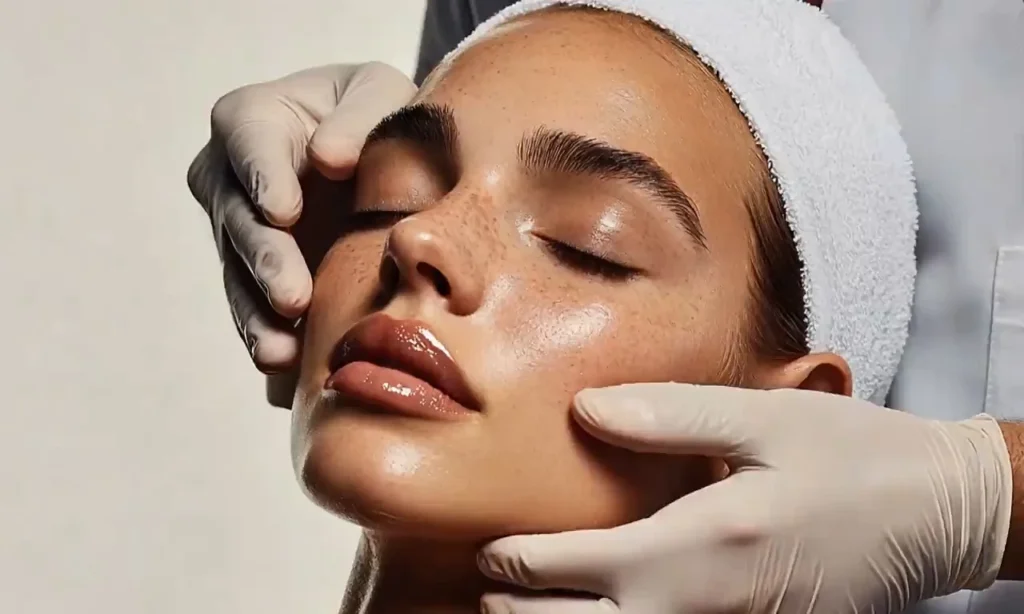Understanding the scope of dermatology can guide skincare decisions and inform expectations for medical treatment and aesthetic enhancement. Dermatology is a branch of medicine focused on diagnosing and managing skin, hair, and nail conditions. In this field, medical dermatology and cosmetic dermatology represent two primary practice areas. Here is more information on cosmetic dermatology, medical dermatology, their differences, and how Botox addresses both cosmetic and medical concerns:
What Is Cosmetic Dermatology?
Cosmetic dermatology addresses procedures and treatments designed to improve the appearance of the skin, hair, and nails. The focus is on aesthetic enhancement rather than managing or diagnosing disease. Cosmetic dermatologists perform treatments such as Botox, laser therapy, injectable fillers, and neuromodulators. These interventions may target wrinkles, skin discoloration, scarring, volume loss, and hair restoration.
The goal of cosmetic dermatology is to help patients achieve their desired appearance. Treatments are elective, and patient satisfaction is often measured by visual improvement. Services in this area cater to individuals seeking rejuvenation, contouring, or enhancement beyond their skin’s baseline state.
What Is Medical Dermatology?
Medical dermatology involves diagnosing, treating, and managing skin, hair, and nail diseases. Medical dermatologists address various conditions, including eczema, psoriasis, acne, infections, autoimmune disorders, and skin cancers. Clinical assessments involve skin examinations, biopsies, laboratory tests, and a review of the patient’s health history. The primary objective of this medical specialty is to alleviate symptoms, prevent complications, and maintain long-term skin health.
How Are They Different?
The main distinction between medical and cosmetic dermatology lies in their objectives and the conditions they address. Medical dermatology is concerned with disease management and restoring normal function, while cosmetic dermatology is focused on improving appearance. Procedures in medical dermatology aim to resolve medical concerns; those in cosmetic dermatology are elective and initiated by patient preference.
While both specialties require a foundation in dermatological science, cosmetic procedures typically prioritize symmetry, texture, and tone. Medical dermatology generally addresses chronic, acute, or serious illnesses, while cosmetic dermatology attends to non-urgent, appearance-related changes. There is some overlap between these fields, with certain treatments like Botox serving both medical and cosmetic purposes.
What Is Botox?
Botox is a brand name for botulinum toxin type A, a purified neurotoxin protein. It is administered as an injectable treatment in small, controlled doses, temporarily blocking nerve signals to targeted muscles and reducing activity in those areas. This action can lead to a smoother surface appearance and modified function in the treated area. A qualified healthcare professional should carry out administration due to the technical requirements of dosing and injection placement.
What Are the Medical and Cosmetic Benefits?
Botox reduces the appearance of dynamic wrinkles, such as forehead lines, crow’s feet, and frown lines. Relaxing specific muscles can enhance facial symmetry and create a smoother, more youthful appearance. Some individuals also choose Botox to prevent the development of wrinkles in high-motion areas.
Outside cosmetic uses, Botox is utilized for medical dermatology applications. One use is the management of hyperhidrosis, a condition involving excessive sweating. Botox can reduce perspiration in targeted areas such as underarms, palms, or soles by blocking the nerve signals responsible for sweat production.
Book a Consultation Today
Dermatology covers a spectrum of treatments from medical management to cosmetic enhancement, each with unique goals and benefits. Understanding the differences between medical and cosmetic dermatology can clarify which path suits your needs, whether for symptom relief or aesthetic improvement. If you are evaluating any dermatological treatment, schedule a consultation with a qualified provider to discuss your goals, options, and what to expect.

